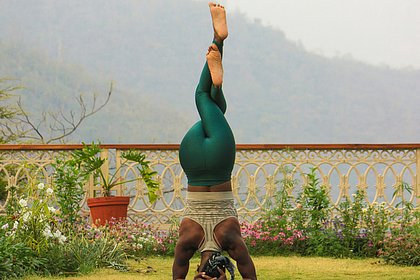
Yoga instructor Ozhgikhina warned about the risk of injury in some asanas
There are some poses in yoga, the risks of which outweigh their benefits, said Anastasia Ozhgikhina, dean of the Faculty of Sports Industry at Synergy University, international hatha yoga instructor. She named the most traumatic asanas in a conversation with Lenta.ru.
When choosing a class, it is important to pay attention to the level of training for which it is designed, since as the popularity of yoga grows, so does the number of injuries associated with it, the expert noted. The instructor also recommended that you be careful when choosing the type of yoga. For example, in her words, hatha yoga is the best type of practice for beginners, which is suitable for people of any level of training and fitness.
Scrolling through my social media feed, I regularly come across social media stars who show off intricate poses that demonstrate incredible flexibility. And it seems that every yogi masters acrobatic elements – birch, bridge, splits, headstands, handstands, etc. Indeed, there are similar asanas in yoga, but they are not practiced at the initial level of training and are not mastered independently, but under the guidance of an experienced instructor
Anastasia Ozhgikhinahatha yoga instructor
First of all, Lenta.ru’s interlocutor classified handstands (adho mukha vrikshasana) and headstand (sirshasana) as dangerous poses. “These are inverted poses that have a large list of contraindications – injuries to the neck, back or shoulder, various eye diseases such as glaucoma, retinal detachment, ear infections, ulcers, headaches, high or low blood pressure, osteoporosis, cardiovascular diseases systems, hypothyroidism, critical days, and there is also a high risk of falling,” she clarified.
The shoulder stand (saravangasana) and the plow pose (halasana) are also associated with certain risks, the instructor says. “It’s also an inverted position with the same contraindications, but here there is also a high risk of injuring the neck – in this position you can’t turn your head, which is what most beginners do,” Ozhgikhina added.
Among the traumatic poses, she also highlighted the bridge (Urdhva Dhanurasana). “It is especially risky if you lean on your head when moving into the bridge; also, most beginners rest in this position, leaning on their head, risking injuring their neck. Contraindications for performing this asana are arthritis, back injuries, eye problems, cardiovascular diseases, blood pressure disorders, shoulder or wrist injuries, headaches, menstrual periods, pregnancy,” the expert explained.
Related materials:
To minimize health risks when practicing yoga, Ozhgikhina advised finding an experienced instructor and listening to him. “An instructor helps you practice safely, and if an instructor suddenly tells you to push through the pain or otherwise makes you feel unsafe, find another instructor,” she concluded.
Previously, yoga instructor Alexandra Churkina talked about the benefits of the downward-facing dog pose. The specialist explained that this asana improves blood supply to the brain due to blood flow to the head, stimulates the digestive tract, stretches the back of the thigh and improves the mobility of the shoulder girdle.
Source: Lenta
Kingston is an accomplished author and journalist, known for his in-depth and engaging writing on sports. He currently works as a writer at 247 News Agency, where he has established himself as a respected voice in the sports industry.











